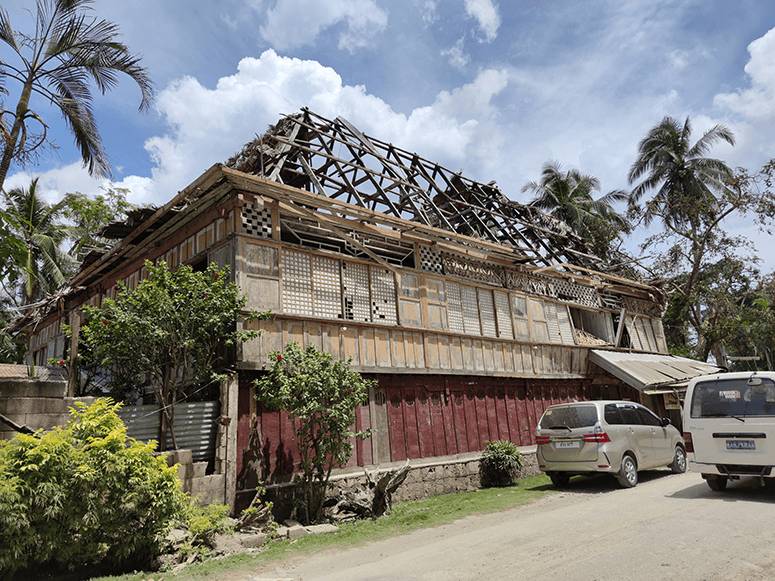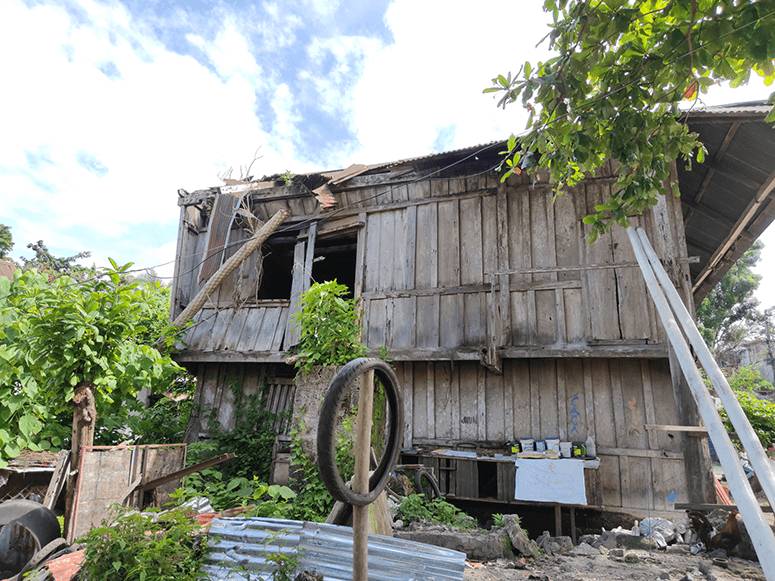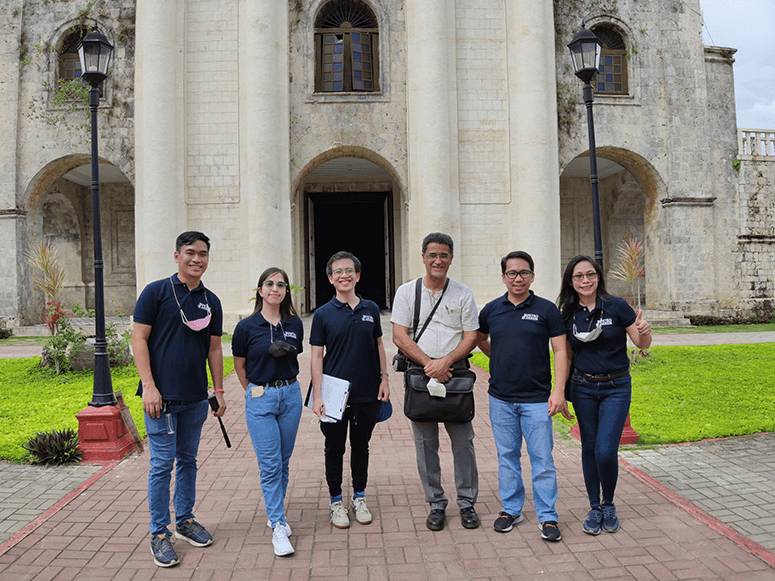Rebounding Bohol: A testing ground for disaster resiliency
Two years shy of the 10th-year anniversary of the major earthquake of Bohol in 2013, another major natural disaster, Typhoon Odette—a massive, category-five storm—passed through the province of Bohol from July 16 to 17 in 2021.
Built heritage was not immune to the typhoon and took the brunt of the storm, succumbing to high winds, torrential rains, flooding, and storm surges. This occurred after almost eight years of post-earthquake restoration work on many structures, namely churches and convents, by the Diocese of Tagbilaran, the National Museum and the National Historical Commission of the Philippines.

The intensity and damage caused by typhoons are a cause of concern as the planet warms, especially for heritage structures. Professor Marianito Luspo of Holy Names University remarked that “it must be recalled that there had been several strong typhoons that visited the province [Bohol] since 1969, but they never caused the same level of destruction as Odette. This could be due to climate change. Old structures are just not built to withstand these.”
An assessment report of the damage from the typhoon was commissioned by the International Council on Monuments and Sites of the Philippines (ICOMOS Philippines). The team was composed of ICOMOS Trustee Erik Akpedonu and Petro Jikken, Inc., a structural engineering firm led by Dr. Rodolfo P. Mendoza Jr., engineer Kenneth Roi P. Toral, and engineer Joaquin Miguel P. Ramos. They conducted an on-the-ground investigation from March 21 to 24, 2022.
 copy.png)
The team was invited by the National Museum Tagbilaran and Prof. Marianito Luspo from the Office of Cultural Affairs Development of the Holy Name University on March 23, 2022, to share their observations at the second meeting of the “Stakeholders’ Forum on Built Heritage Structures Impacted by Typhoon Odette” hosted by the Center for Cultural and Arts Development of Bohol. Also in attendance were Father Milan Ted Torralba of the Commission for the Cultural Heritage of the Church, Diocese of Tagbilaran, the Department of Education, and the Bohol Arts and Culture Heritage Council.
The intensity and damage caused by typhoons are a cause of concern as the planet warms, especially for heritage structures. There is one category that still is the most vulnerable, the ancestral home.
After their assessment, the ICOMOS team concluded that structural damage mainly occurred on the roof coverings, which lifted up in the high winds of the cyclone. Roofs that were most susceptible to damage were in structures whose wooden members were deformed, in a state of decay, or were poorly repaired, maintained or constructed. Unstable connections within the wooden roof systems were also another factor.

They observed that the types of nails and screws and their spacing along the roof was another reason why roofs were torn off easily by the wind. Regardless of age, the fastenings of the roof covering to the building was inadequate to sustain the high winds. Materials, too, like nipa roof coverings did not fare well. Four ancestral homes with nipa roofs suffered complete uplift.
At present, all LGUs have already finished repairing their municipal halls, and Father Milan Ted Torralba reported that the diocese was able to address all church damages without any help from the national agencies. He positively states, “it did take a while, but all’s well that ends well.”

Yet there is one category that still is the most vulnerable, the ancestral home, numbering around 500 in the province. Ancestral homes cannot receive funding from the national government since they are privately owned, despite their cultural value. Thus, many of the ancestral homes damaged during Typhoon Odette remain unrepaired and are at risk.
The ancestral homes of Bohol are a unique type, since most are built entirely out of wood, modest in appearance and simpler in construction than their counterparts in other regions. The ground floors are typically not stone, but enclosed by wood, bamboo, thatch, or unclosed. Roofs, if not already galvanized iron, are predominantly thatch. Thus, the moniker of bahay na bato cannot be applied here; the more appropriate term would be bahay na tabla.

Professor Marianito Luspo states, “They contribute to the identity of people and promote pride of place. Since their owners neither have the financial capability nor the knowhow to preserve them, there is real danger that they would disappear, otherwise be replaced with new architectural styles that would expunge their historical and heritage integrity. Towards this end, legislators must craft new laws that could address the problem, but it calls for a paradigm shift as regards the role of government towards assistance to all heritage structures as a whole.”
Unfortunately, two years later, one of the NHCP declared homes, the Clarin House in Loay, stands as a testament to Professor Luspo’s statement. Its characteristic nipa roof has completely disappeared, the interiors get wet each time it rains, and it is quickly deteriorating to a point where it is wholly unrecognizable. The current owner cannot afford the extensive repairs that are required, and although technical assistance is available, it cannot be applied.

Professor Marianito Luspo concluded, “the Bohol ancestral house, unlike those in other parts of the country, are not the elaborate mansions of the rich whose owners have both the means and the intent to either preserve or change it. Bohol houses are repositories of that cultural attitude of Boholanos that value simplicity and inclusivity of all classes. The preservation of these vernacular heritage houses redound to the continuation of our unique character as a people.”
ICOMOS Philippines continues to advocate for national cultural policies that will allow greater access to funding for the totality of our built heritage. Built heritage is an opportunity to promote community building, cultural identity, and economic growth. It is evident that our built heritage structures and sites have had rising visitation rates and thus is a strong economic driver, bringing revenue at local and national levels.
As Bohol is recovering from yet another calamity, it is a reminder that all Filipinos are stewards and protectors of their past. And to preserve this inheritance, disaster resilience is crucial so that not only will lives and livelihoods be preserved and enhanced, but our heritage can be enjoyed now and in the future.


